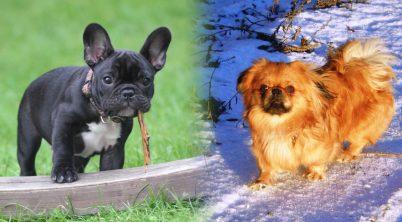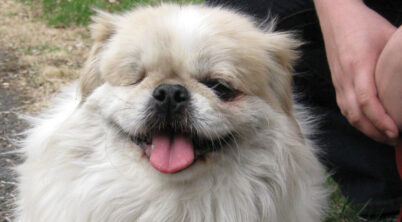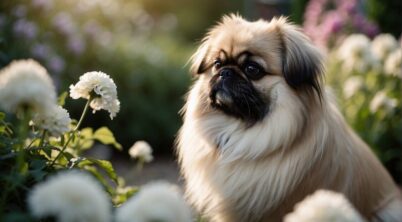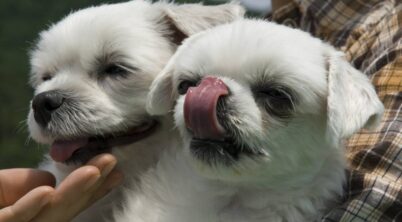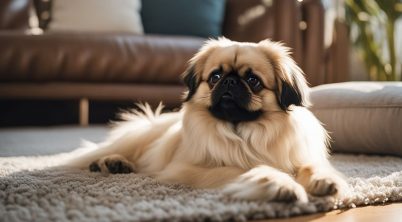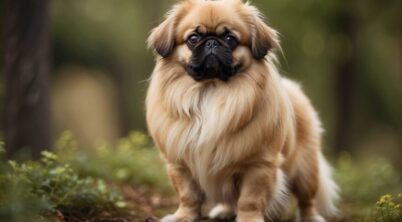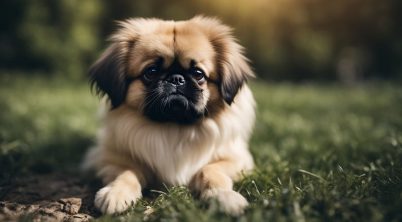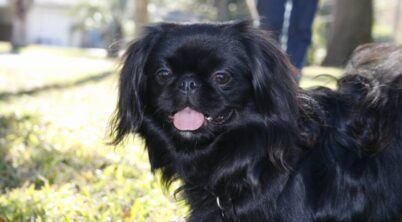The Pekingese, a breed steeped in ancient Chinese history, was once the cherished companion of Chinese royalty. This small yet dignified dog is known for its distinct lion-like mane and confident demeanor, traits that reflect its imperial past. Their regal bearing often leads to a strong personality that isn’t afraid to assert itself, which includes the occasional growl. While growling can sometimes be dismissed simply as a quirk of the breed, understanding the underlying causes is crucial for responsible Pekingese ownership.
Growling in Pekingese, as with any breed, is a form of communication that can indicate various emotional states, such as fear, discomfort, or the desire to protect resources. It’s important for owners to recognize that a growl is not just a default response to annoyance but could be an expression of deeper concern. Knowledge of dog behavior helps in discerning what the Pekingese might be trying to convey, particularly in situations where they may feel the need to guard their food, toys, or even their human companions.
Addressing growling requires a blend of respect for the breed’s history and an understanding of canine behavior. Pekingese may carry the air of ancient royalty, but they are also living, feeling animals that require patience and appropriate training to coexist peacefully with their families. Through consistent, positive reinforcement training and an attentive approach to their care, Pekingese can thrive as loving and well-mannered companions.
Table of Contents
Understanding Growling
Growling in Pekingese can be a nuanced form of communication, signaling anything from aggression to a simple desire to convey a message. Recognizing the context and associated body language is critical for accurate interpretation.
Growling and Aggression
When a Pekingese growls with signs of aggression, it is crucial to take notice. Aggressive growling typically comes with a combination of symptoms such as a stiff body posture, bared teeth, and direct eye contact. This type of growling might occur due to resource guarding, where a dog feels the need to protect food, toys, or territory. It is a warning that could escalate to biting if the perceived threat does not withdraw.
- Body Language Indicating Aggressive Growling:
- Stiff body posture
- Bared teeth
- Direct eye contact
- Raised hackles
- Ears pinned back
Growling and Communication
Growling isn’t always a sign of aggression; it can also be an important part of canine communication. A Pekingese may growl to express discomfort, anxiety, or even playfulness. Understanding growling within the context of body language and the situation is vital.
For instance, play growling is often seen when a dog is enjoying playtime and is accompanied by a relaxed body language, thus differentiating it from aggressive growling.
- Types of Communication Through Growling:
- Discomfort: A low, continuous growl as someone approaches their resting space.
- Playfulness: A softer growl accompanied by bouncy movements or a play bow.
By paying close attention to the cues provided by a Pekingese, one can discern the message being conveyed through their growls.
Training and Socialization
When it comes to Pekingese dogs, training and socialization are crucial for their development into well-adjusted pets. Due to their history as revered companions in Chinese royalty, Pekingese can display a sense of independence that poses challenges in training. Positive reinforcement is the most effective approach, rewarding desirable behavior with treats, praise, or affection to reinforce good habits.
Early Socialization is key to ensuring that a Pekingese becomes comfortable with a variety of people, pets, and environments. Introducing the dog to different stimuli from a young age helps prevent the development of fear-based responses such as growling.
- Training Commands should be introduced gradually, using a clear and consistent tone. Essential commands include sit, stay, come, and leave it.
- Affection is an important component of training; a Pekingese that feels loved and secure is more likely to respond well to training efforts.
Interaction with Children and Families: Pekingese can be great with children if they are socialized early; however, interactions should always be supervised to ensure the safety of both the child and the dog. Teaching children how to approach and handle the dog respectfully is essential to fostering positive relationships.
| Age Range | Focus of Training or Socialization |
|---|---|
| 8-16 weeks | Basic commands, handling, household noises |
| 4-6 months | Leash training, socialization with people and animals |
| 6-12 months | Reinforcement of commands, polite behavior with visitors |
Pekingese thrive in a family where they are not overly pampered but treated with a balance of leadership and companionship. With patience and consistency, they grow into loyal and affectionate family members.
Pekingese Pups
Pekingese puppies possess a notable blend of noble character and bold temperament, a testament to their breeding lineage. Originating from ancient China, these dogs were once companions to royalty, and even today, they carry themselves with a regal bearing.
When it comes to puppy growth and development, Pekingese pups require careful attention. During their early months, they will experience rapid growth and numerous developmental milestones. It’s crucial for owners to monitor their progress and help them adjust to their new environment.
Early Care for Pekingese Puppies:
- Nutrition: Feed them high-quality puppy food that meets their nutritional needs for growth and health.
- Training: Start basic training early, focusing on socialization and gentle correction of undesirable behaviors like biting.
Essential Milestones:
- Weight gain and physical growth
- Socialization with humans and other animals
- Introduction to basic commands
A responsible selection process by breeders ensures that Pekingese puppies are healthy and well-socialized. Good breeding practices contribute to the pups’ bold characteristics, reducing fearfulness and anxiety. These breeds are known for their loyalty and protective nature which can manifest in behaviors like barking and growling. Pekingese pups may growl as part of their playful behavior or as a means of communication.
Owners should establish a firm, consistent training routine from an early age to channel the breed’s intelligence and boldness into positive behaviors. Proper care and training will allow the noble qualities of the Pekingese to shine through, as they grow into confident, well-behaved companions.

